News & Blogs 2024-01-17
Bioeast SA Magnetic Beads | Customization of SA Magnetic Beads Available

EN
CN
EN
News & Blogs 2024-01-17
Bioeast SA Magnetic Beads | Customization of SA Magnetic Beads Available
The Streptavidin (SA) - Biotin system is commonly used in immunoassays for signal amplification. Streptavidin is a glycoprotein commonly found in egg white, composed of four identical subunits, each with a biotin binding site. Therefore, a theoretically normal streptavidin can bind to four biotins, making the SA-Biotin system widely used in immunoassays. The most common application is coating streptavidin on the surface of magnetic beads and labeling antibodies with biotin. To this end, Bioeast Biotech offers the following high-loading SA magnetic beads:
| M1000TS | M2800TS | M1000S | M2800S | |
| Particle Size | 1.2um | 2.8um | 1.2um | 2.8um |
| Coupled SA Group | tosyl | tosyl | carboxyl | carboxyl |
| Free Biotin Binding Capacity | >1600pmol/mg beads | >700pmol/mg beads | >2000pmol/mg beads | >800pmol/mg beads |
| Magnetic Content | ~20% | ~14% | ~20% | ~14% |
Customization of SA magnetic beads with specific particle sizes and magnetic content available
Experimental Principle:
Mix Streptavidin (SA) magnetic microspheres with biotin-coupled antigen or antibody in an appropriate ratio, form magnetic microsphere coupled antigen or antibody complexes through SA-Biotin, for use as a component of the test reagent.
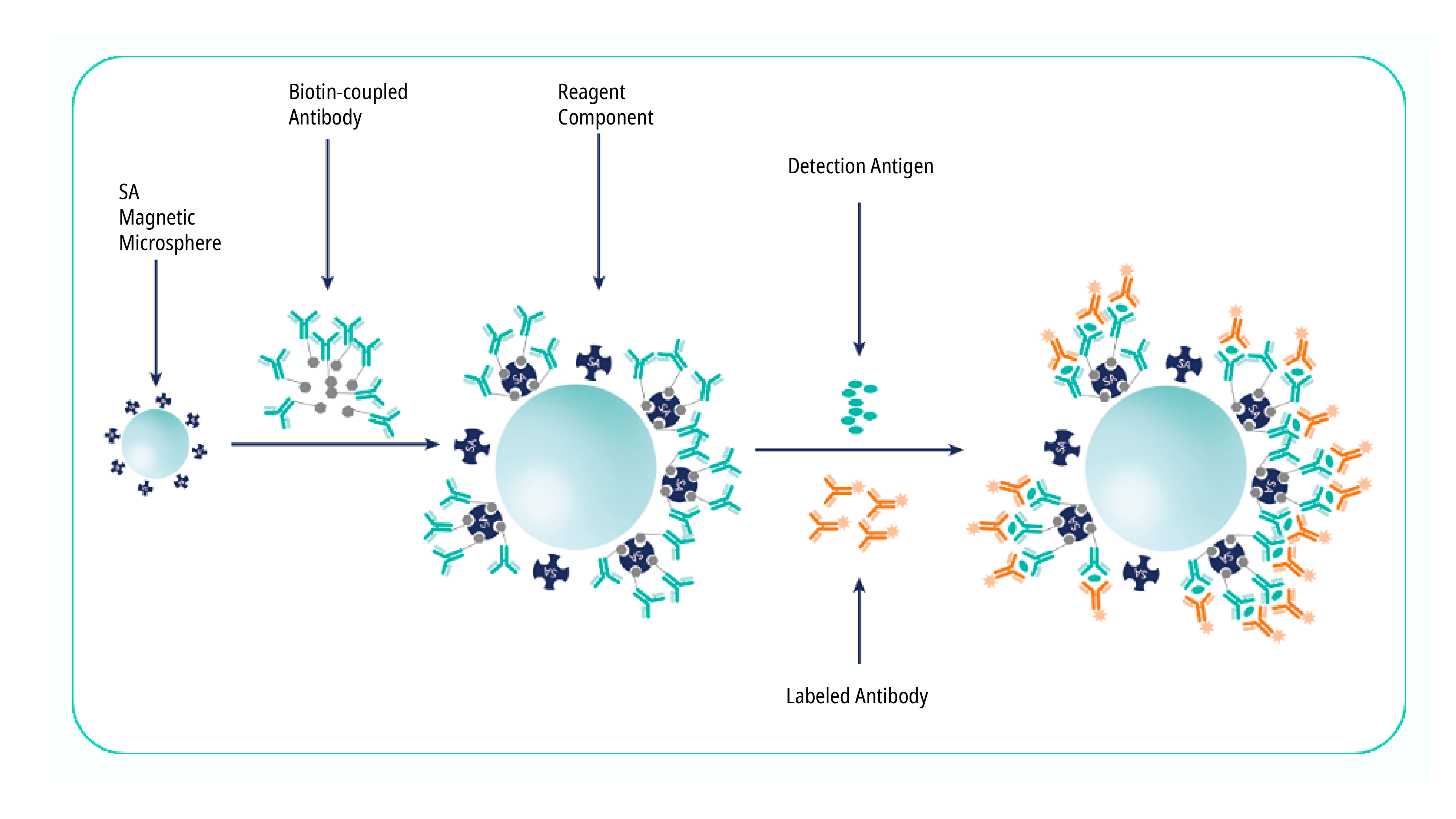
Performance Display:
Taking Troponin as an example, Bioeast's internal laboratory used M1000TS beads in a pre-mix mode for evaluation against similar imported magnetic beads. Under the same concentration and reaction conditions:
a) Bioeast's streptavidin magnetic microspheres showed higher luminescence values in cTnI detection than the same type of 1.0um magnetic microspheres from an imported brand.
b) Also, Bioeast's streptavidin magnetic microspheres showed lower background values and significantly higher signal-to-noise ratios in the cTnI project, thereby improving the detection sensitivity of the project.
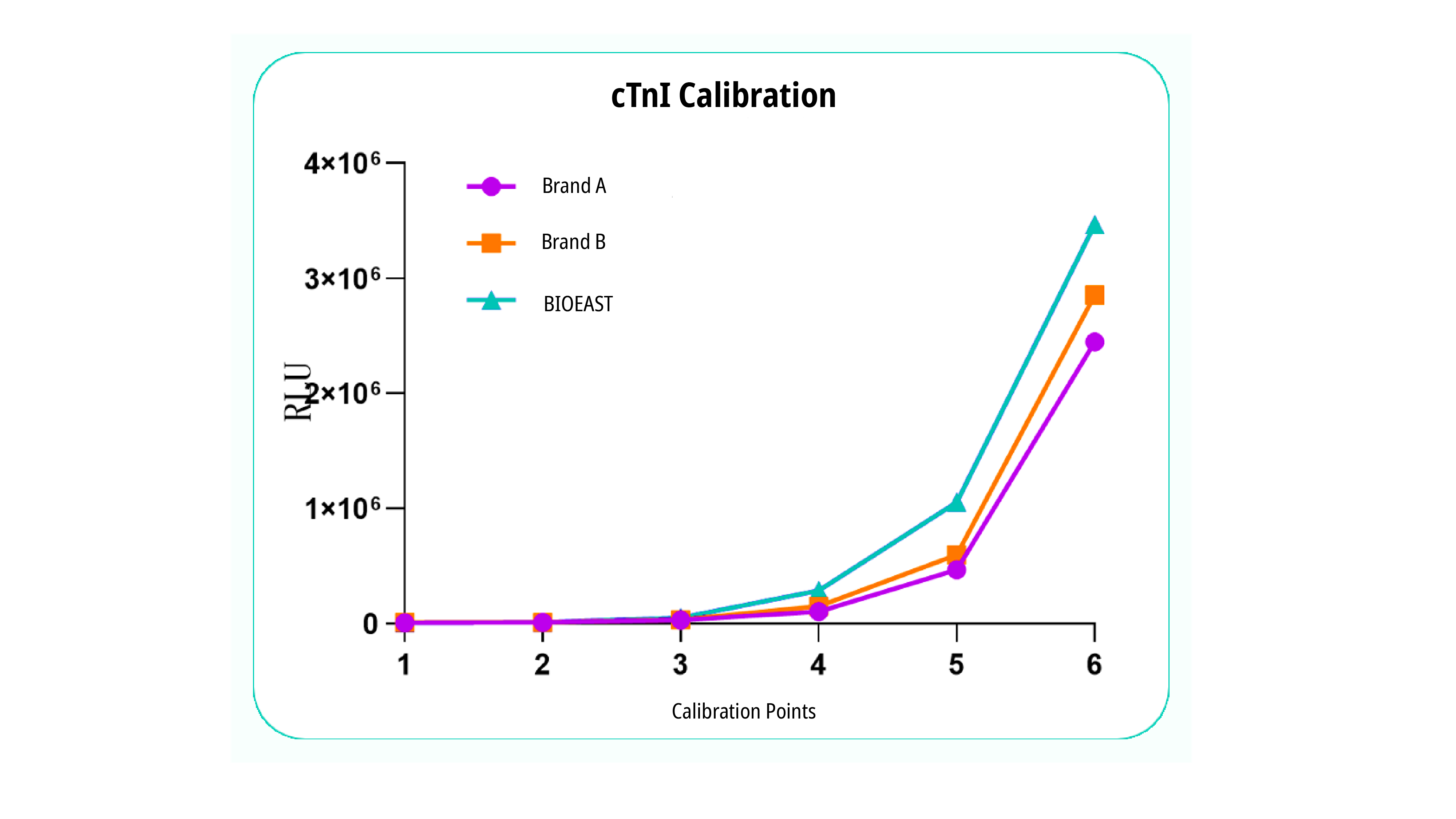
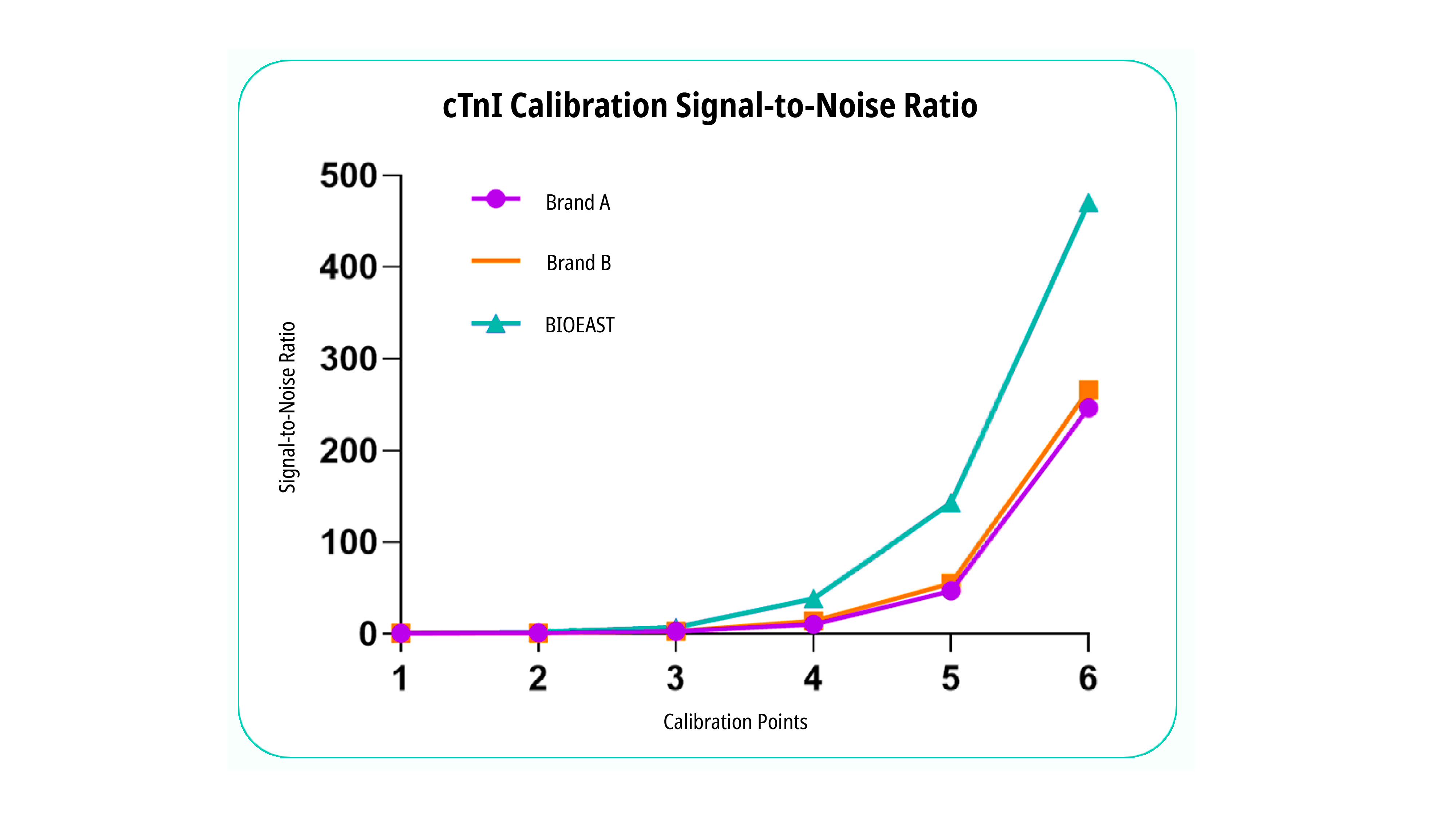
According to the criteria published by the International Federation of Clinical Chemistry (IFCC) for high-sensitivity cardiac troponin detection methods[1]:
1. Total imprecision CV≤10% at the 99th percentile value;
2. Detection rate in the healthy population ≥50 %.
Bioeast's internal laboratory used M1000TS magnetic beads in the pre-mix mode for reagent performance analysis, showing good low-value precision <10%, with a cTnI detection rate in normal individuals >50%.
3. Precision Test:
Test 15 times using 3 clinical samples below the 99th percentile value from Competitor Brand, showing good low-value precision (CV<10%). Results are shown in the following figure.
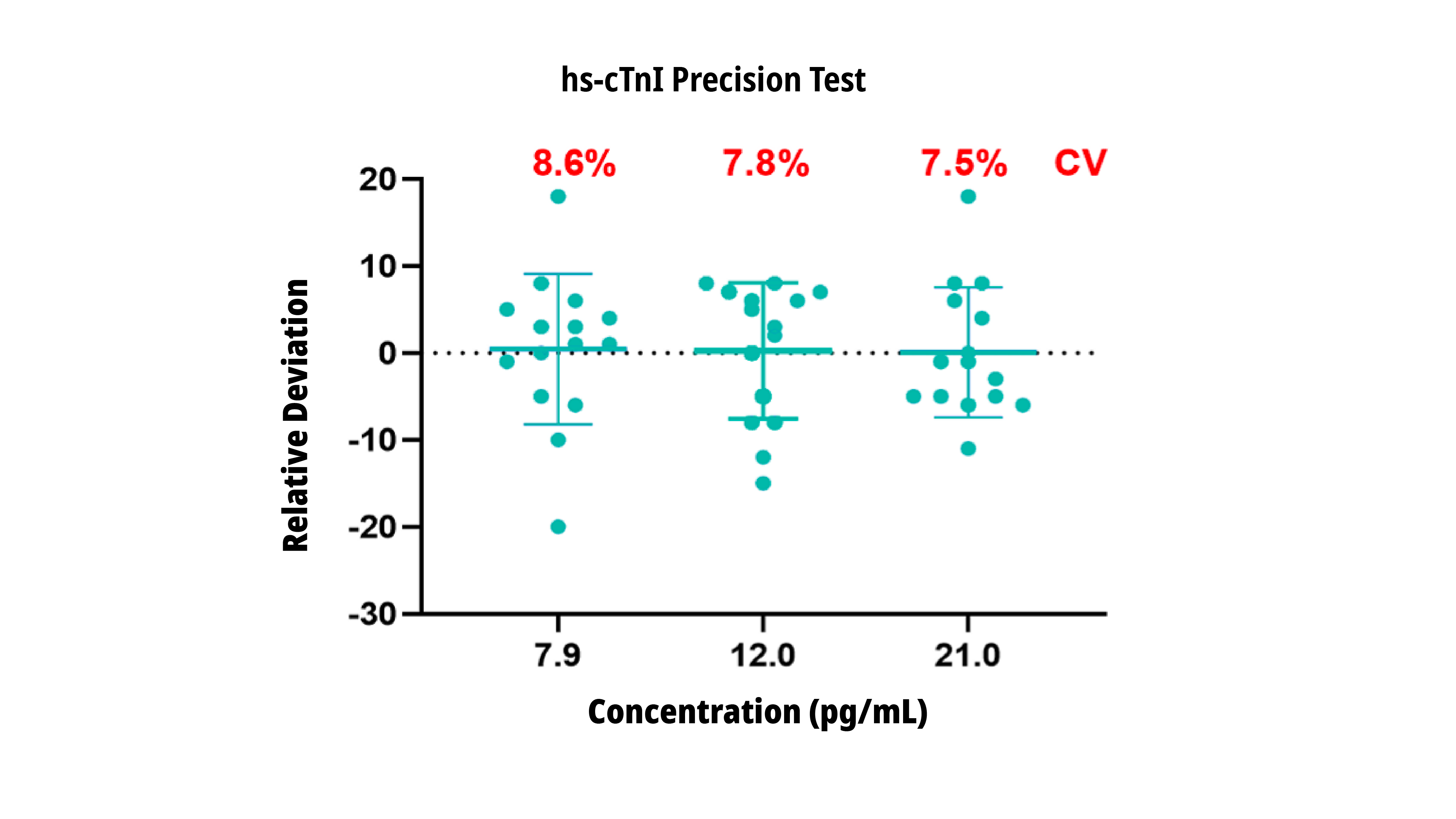
Normal Sample Testing
Test 50 normal individual samples, showing a detection rate of 80% in this batch, meeting the criteria for high-sensitivity troponin detection systems (>50%). See the following figure.
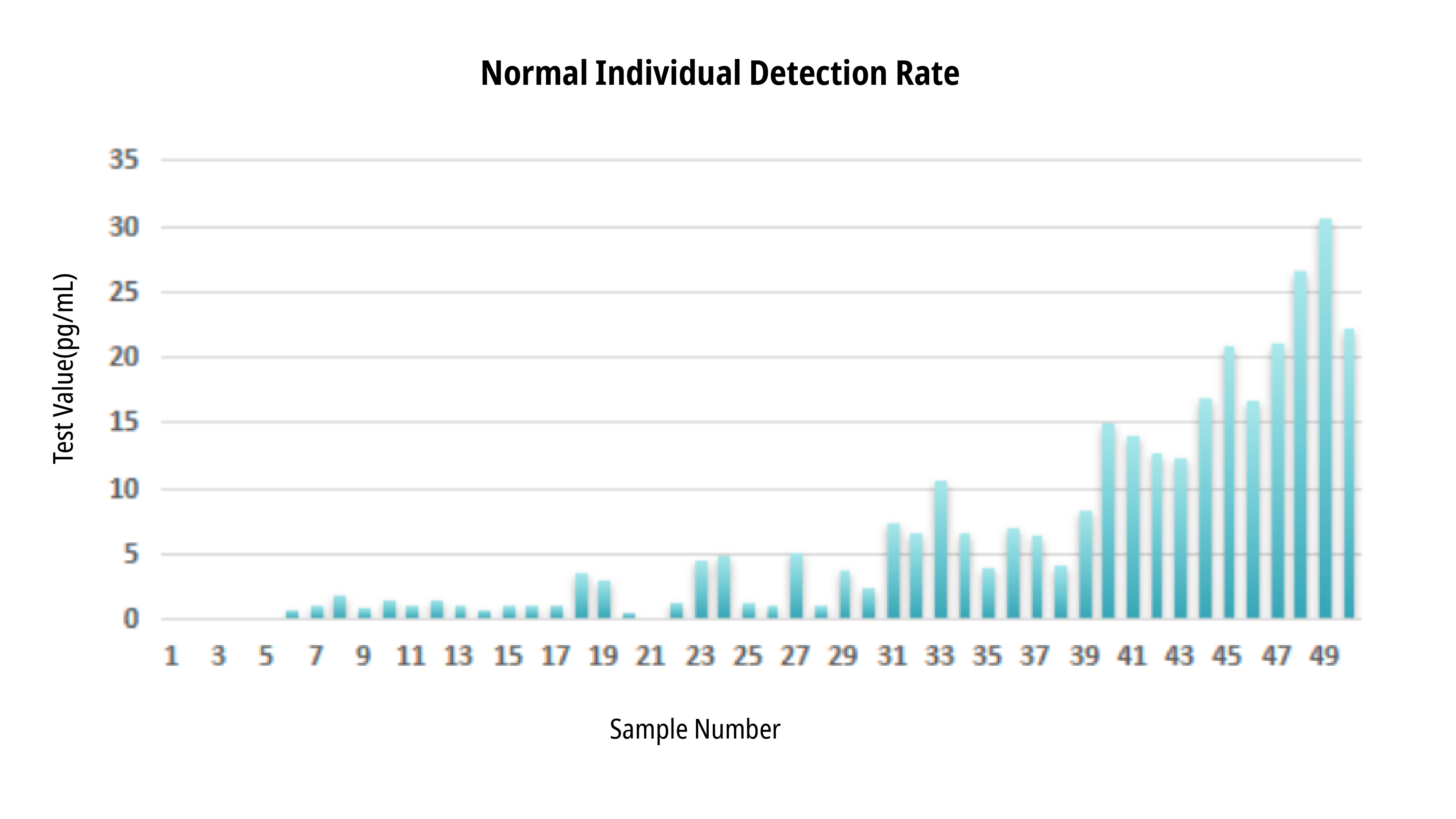
Reaction Principle:
Dilute Streptavidin (SA) magnetic microspheres with an appropriate diluent and use them directly as a test reagent component, reacting with biotin-coupled antigen or antibody during the detection process.
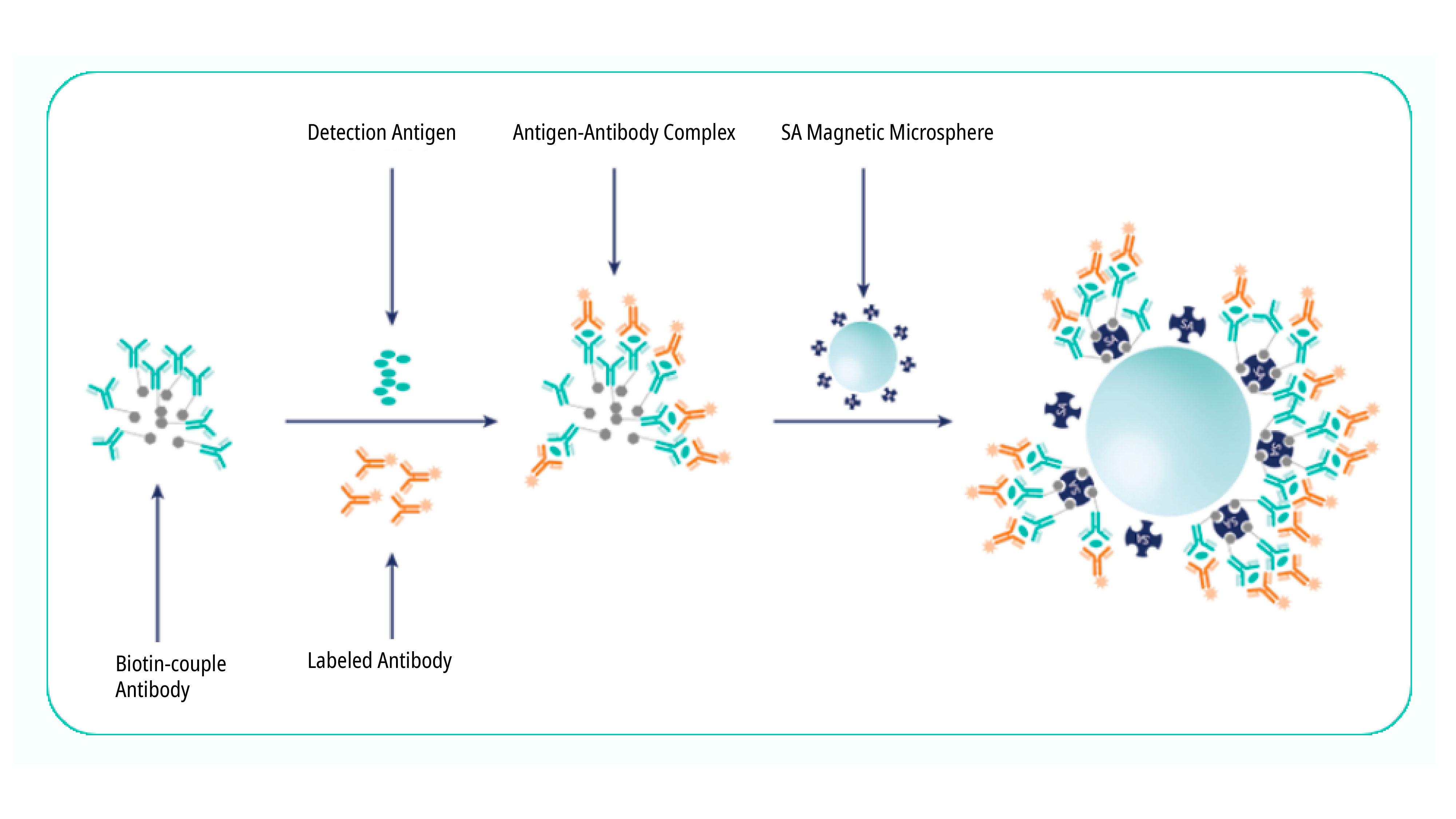
Performance Evaluation
Taking Thyroid-Stimulating Hormone (TSH) as an example, Bioeast's internal laboratory used M1000TS magnetic beads in a pre-mix mode for evaluation against similar imported magnetic beads. Under the same concentration and reaction conditions:
a) Bioeast's streptavidin magnetic microspheres showed luminescence values in TSH detection similar to the same type of 1.0um magnetic microspheres from an imported brand.
b) Also, Bioeast's streptavidin magnetic microspheres showed lower background values and significantly higher signal-to-noise ratios in the TSH project, thereby improving the detection sensitivity of the project.
c) Clinical sample correlation was similar among the three types of beads.
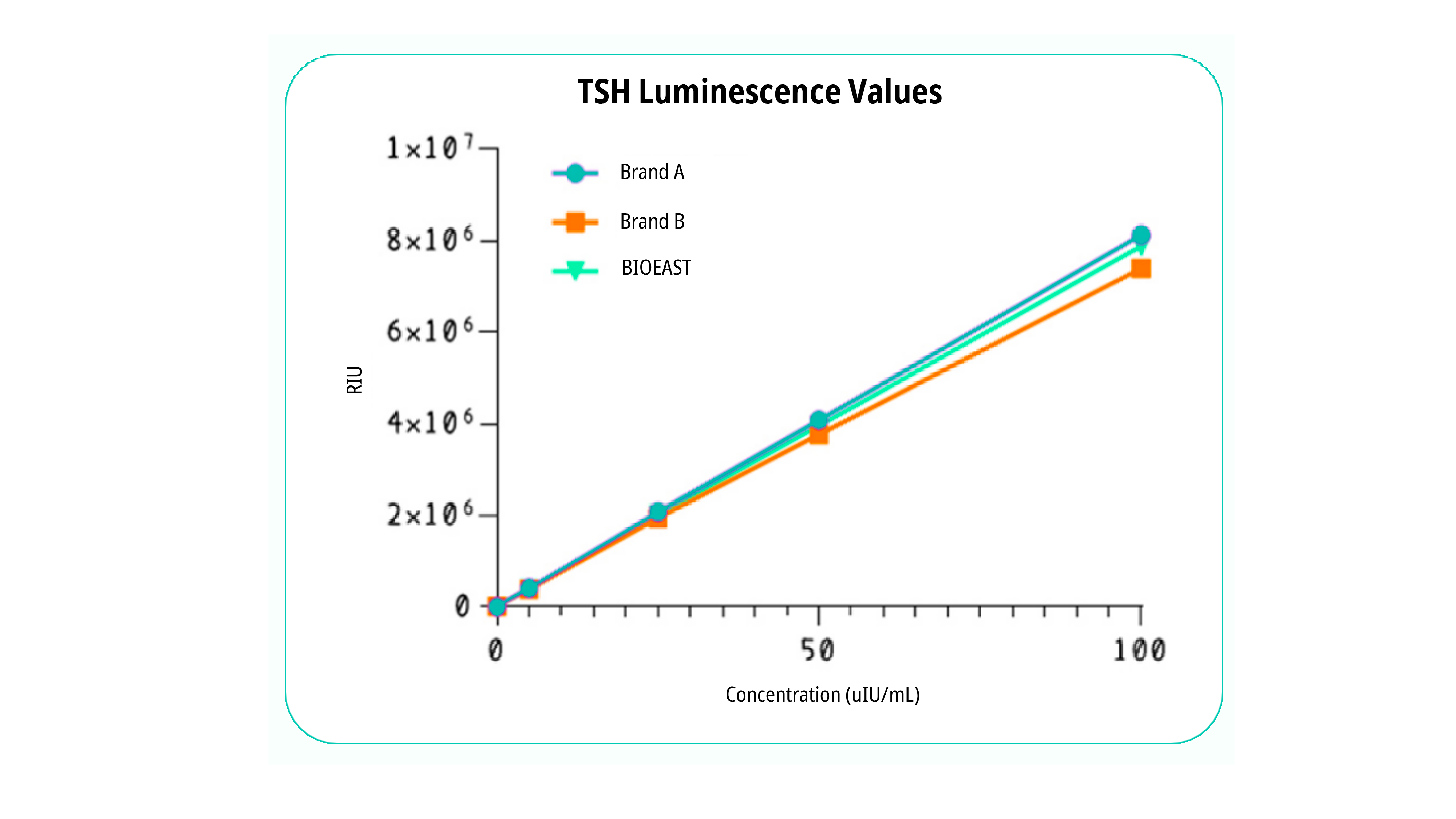
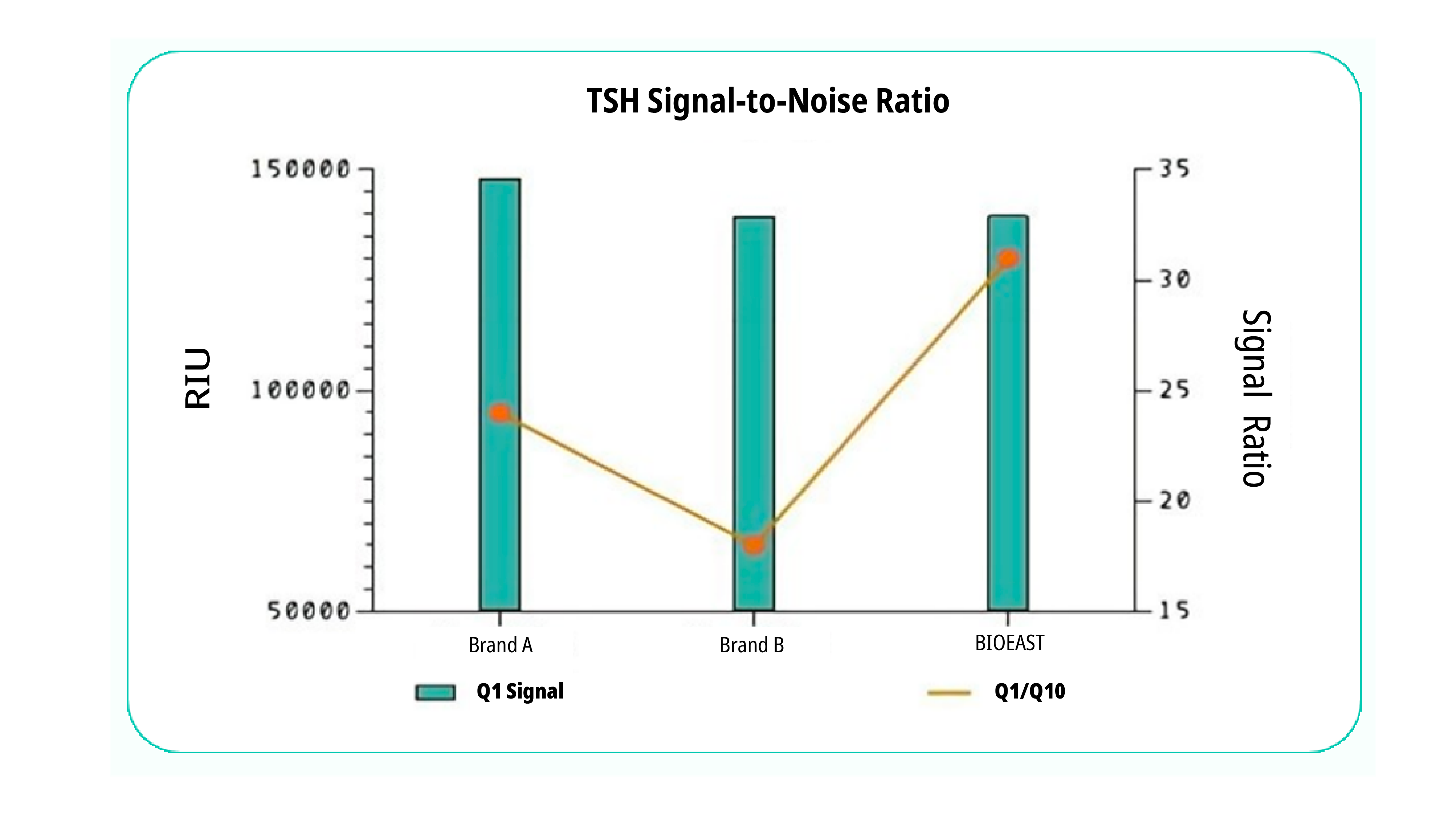
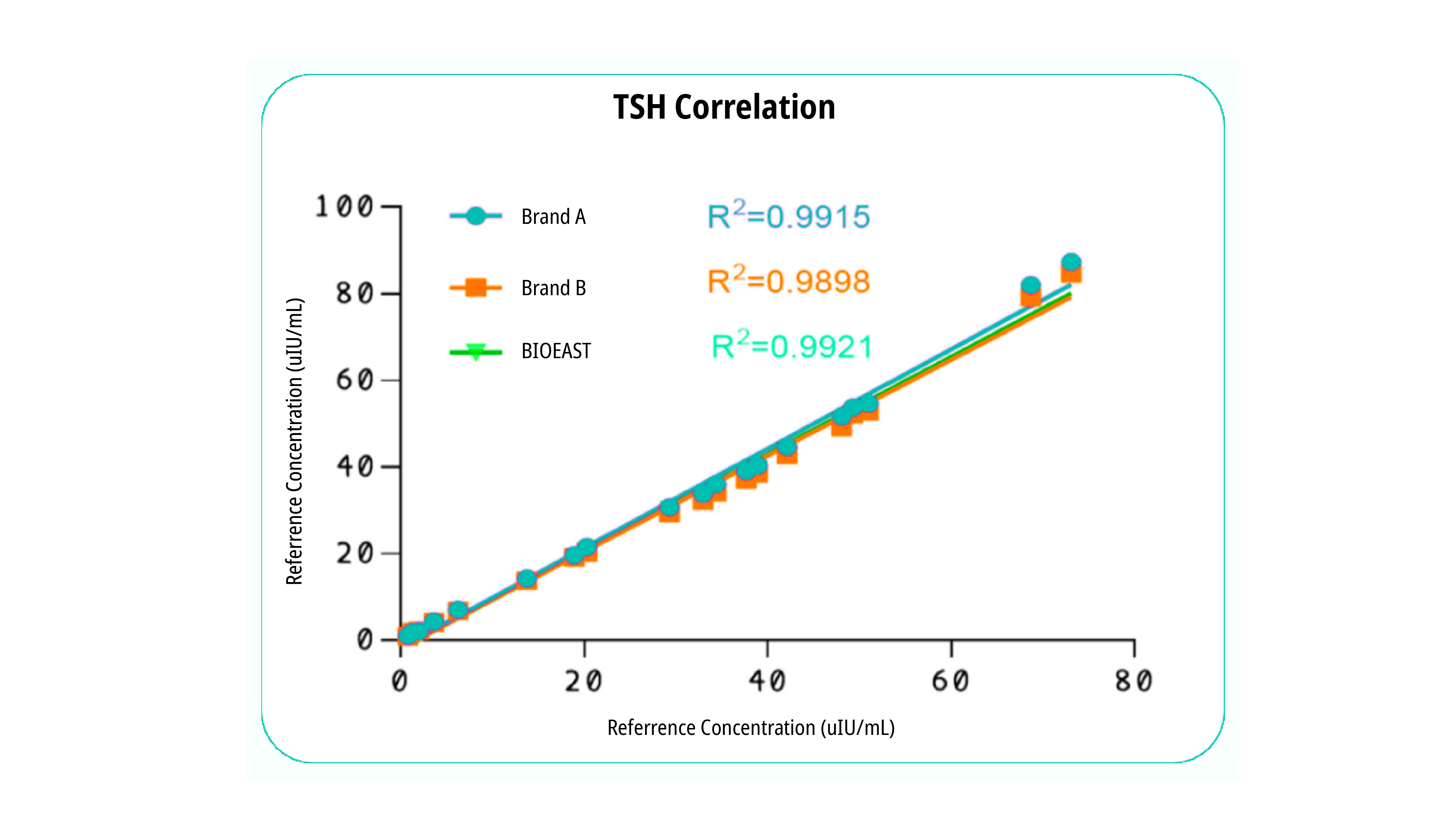
For the free biotin system, potential biotin sample interference should be noted. In both sandwich and competitive assay modes, free biotin in the sample competes to bind to the SA on the beads, causing lower luminescence signals, leading to falsely reduced values in sandwich assays and falsely elevated values in competitive assays. The principle is shown in the following figure[2].
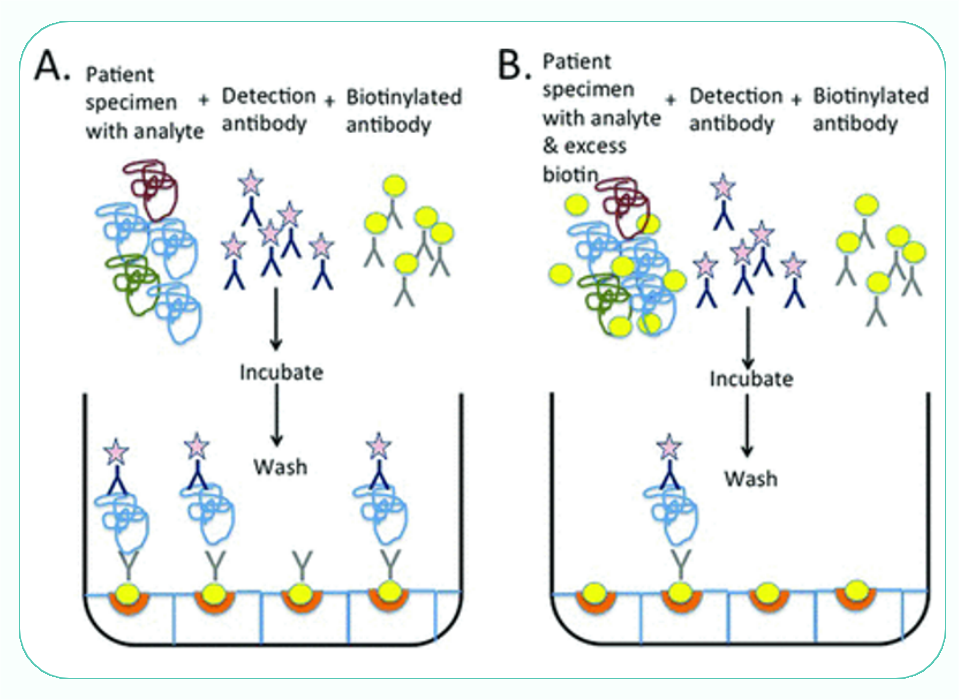
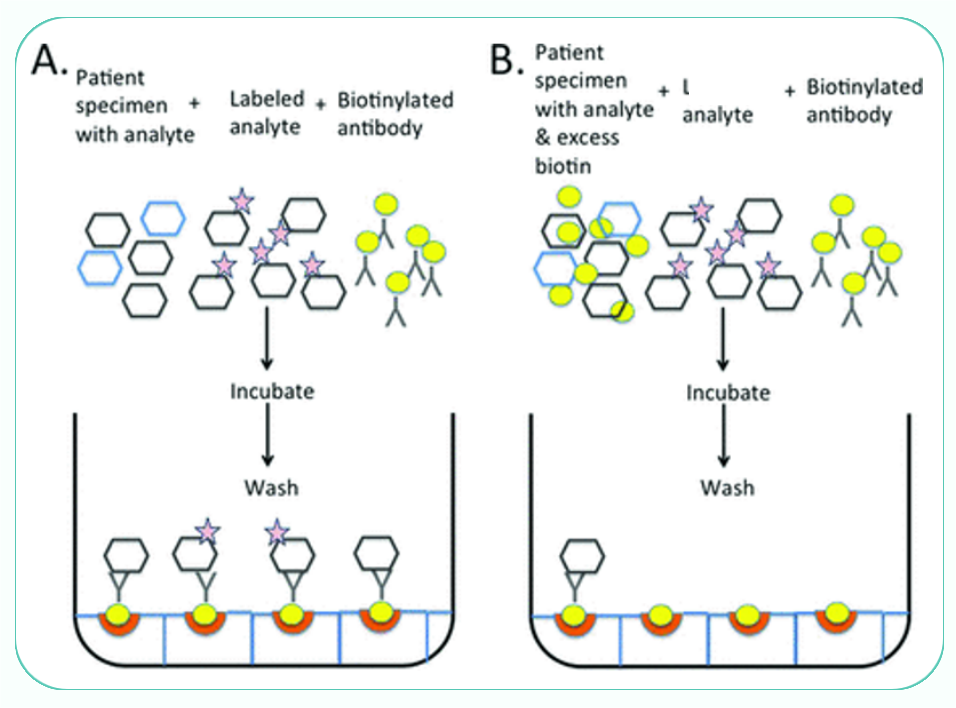
Bioeast's internal laboratory used M1000TS high-loading SA magnetic beads in the TSH project for free biotin interference performance testing. The results show that Bioeast's M1000TS high-loading SA magnetic beads perform similarly to the imported A brand beads known for their excellent anti-biotin interference capabilities.
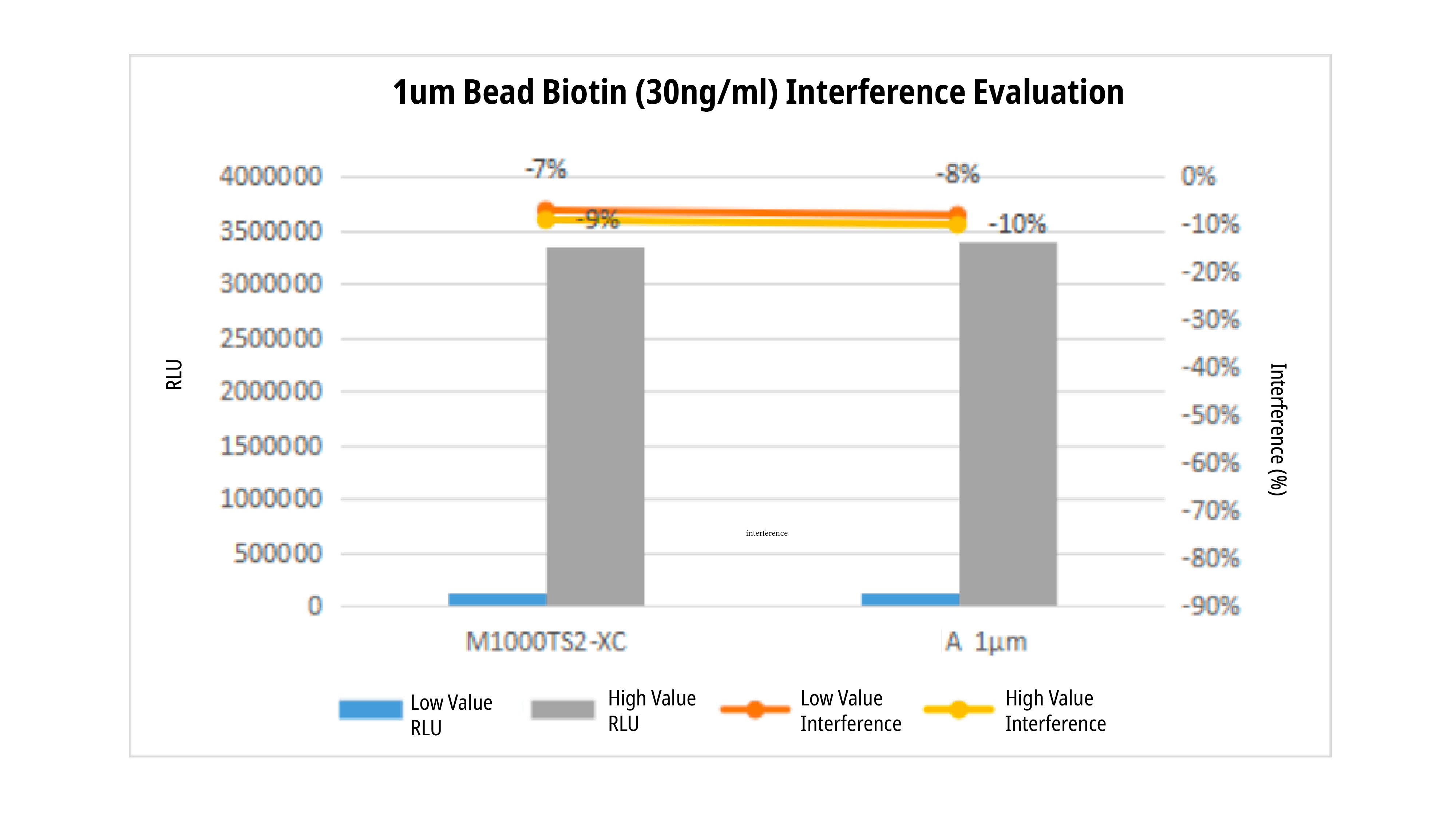
References:
Apple, F.S., et al., Clin Chem. 2012; 58(1): 54-61.
Paula Jenkins Colon, Dina N Greene. Biotin Interference in Clinical Immunoassays. The Journal of Applied Laboratory Medicine, Volume 2, Issue 6, May 2018, Pages 941-951.